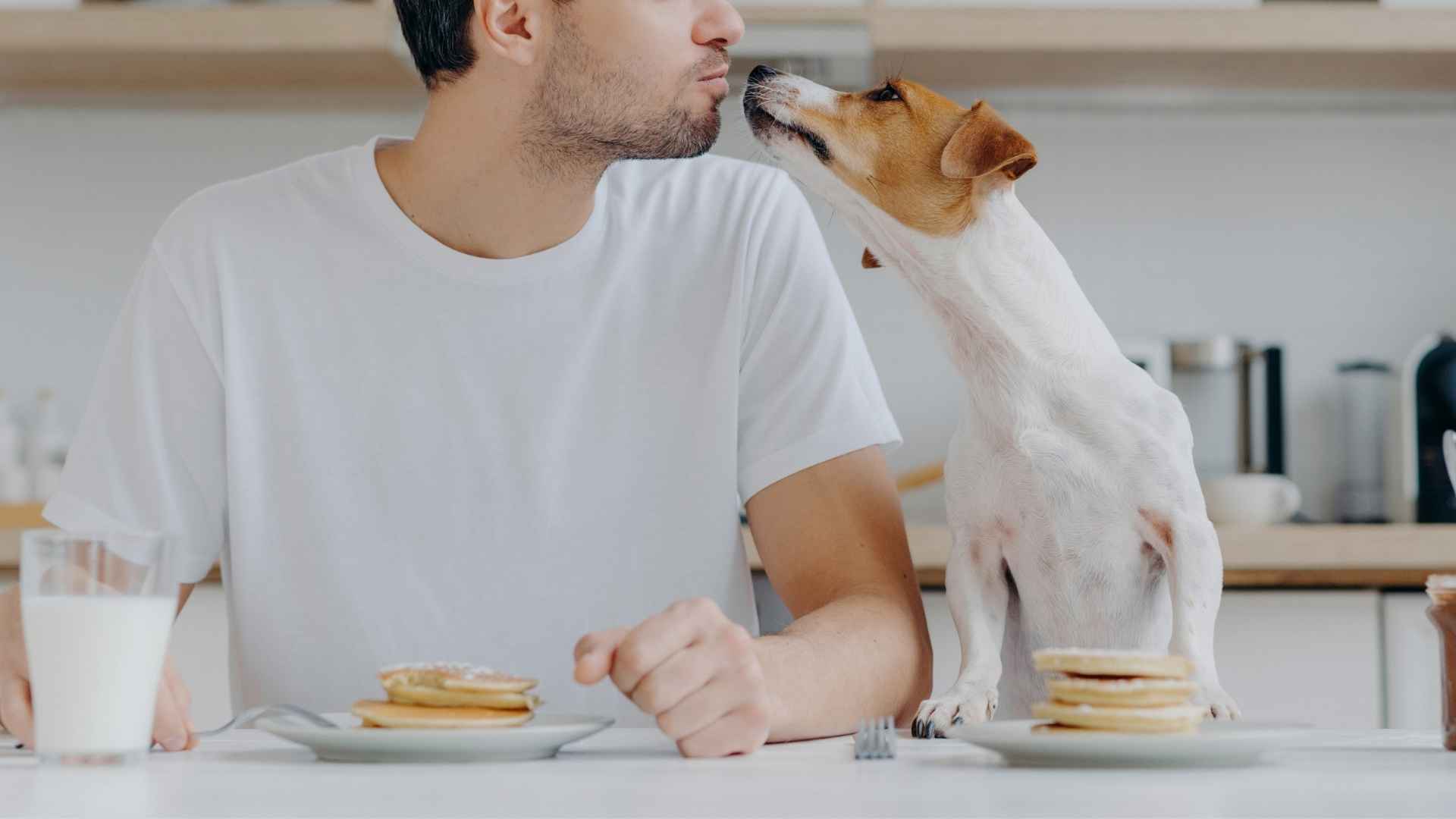According to researchers, dogs release oxytocin. The same hormone is tied to human bonding when physically close to their owners.
That may explain why some breeds are especially prone to nudging, nosing, or gently leaning against your arm as you eat. It’s not just food they’re after. In many cases, the behavior reflects closeness, comfort, and routine.
For dogs that see meals as bonding time, proximity matters more than scraps. Certain breeds are naturally drawn to this kind of contact, using soft nuzzles to stay connected. Whether you find it endearing or mildly disruptive, this behavior speaks volumes about a dog’s emotional wiring.
This article introduces the breeds that are known for these gentle gestures at mealtimes—dogs who treat your dinner hour as a shared ritual, not just a human one.
Dog Breeds That Nuzzle Owners While They Eat
1. Shih Tzu
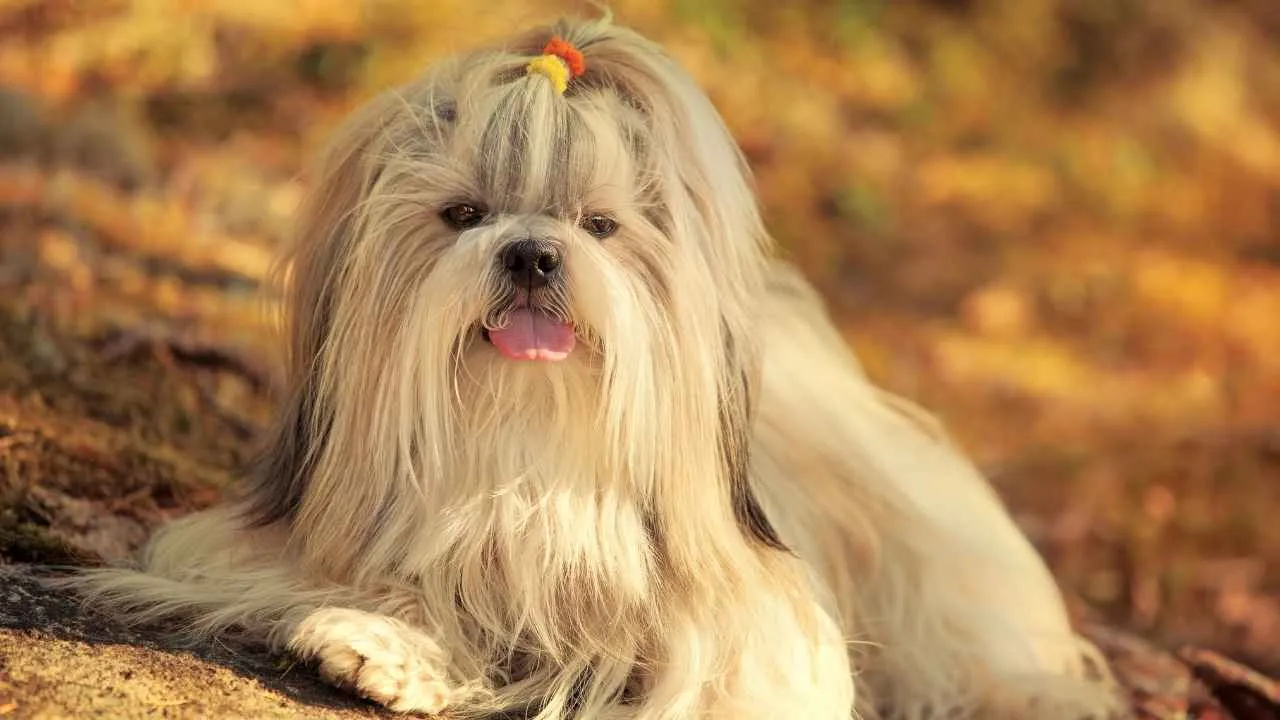
Shih Tzus often seek physical closeness when their owners are seated for extended periods, including meals. This is when they’re most likely to approach and touch the leg, arm, or side. Many pet owners report the breed’s habit of sitting at their feet or gently leaning in, as per All Shih Tzu.
Mealtime Attention-Seeking
Rather than barking or whining, they use their body or head to initiate contact when food is present. This type of dog nuzzle behavior isn’t about aggression but about inclusion. They often look up or nudge softly as part of their desire to stay part of the interaction.
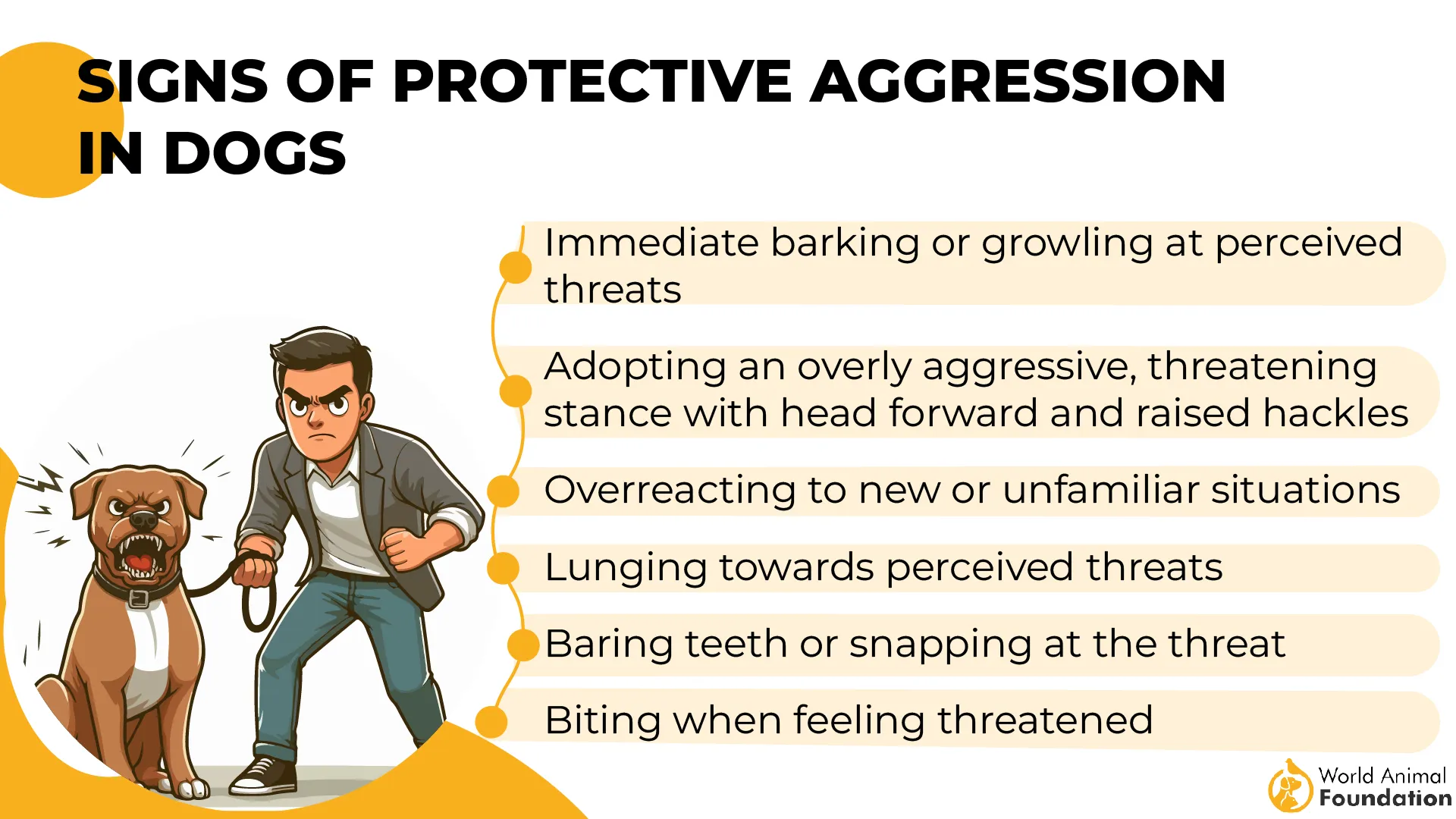
Motivated by Owner Responses
Shih Tzus tend to repeat behaviors that previously resulted in attention, eye contact, or petting. If a nudge at the dinner table got a reaction once, they are likely to do it again. These patterns are shaped over time, especially in indoor or lapdog routines.
Bond-Focused Interactions
This breed thrives on a sense of emotional closeness and routine. Mealtime becomes another opportunity to build that connection through small, affectionate gestures. Their actions are less about food and more about being present in the moment with their person.
2. Pug
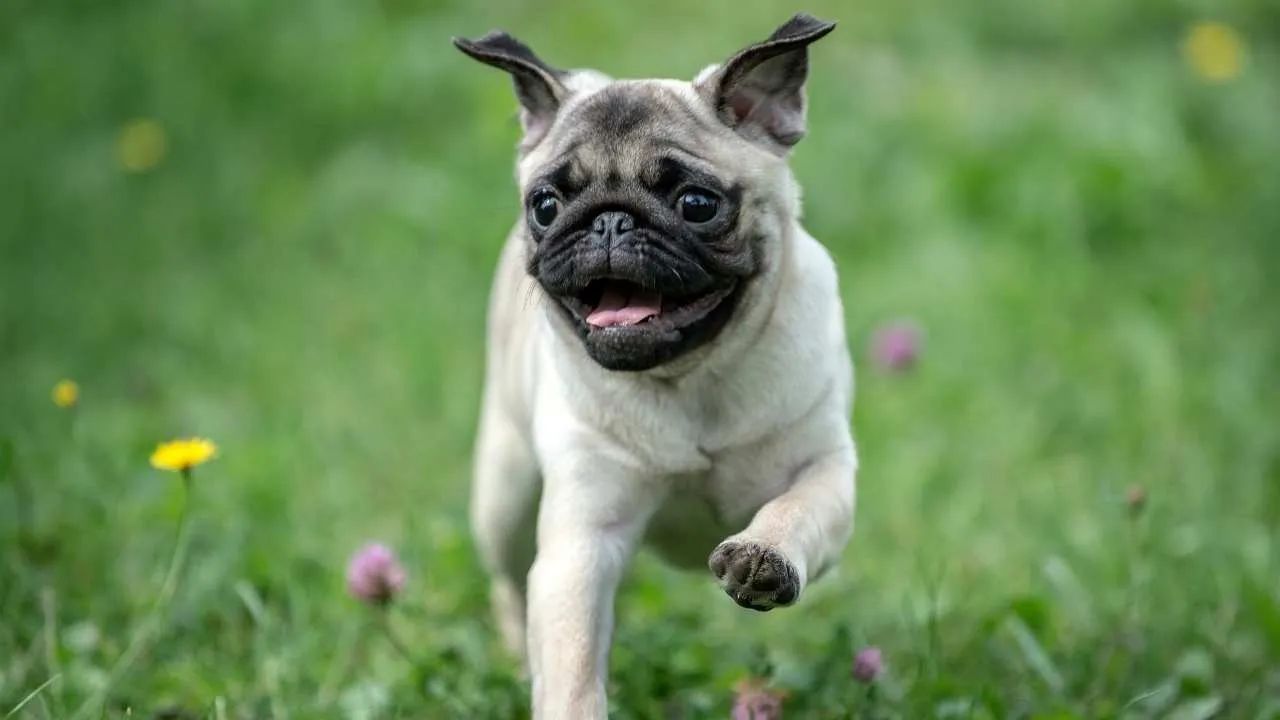
Pugs are naturally drawn to the presence of food and the routine of mealtimes. They often sit or stand close to their owners during meals, nudging knees or leaning in with light pressure. This behavior is more about shared attention than urgency or begging.
Built-in Social Curiosity
This breed is known for shadowing its owner during regular activities, especially when seated. Their frequent attempts to make eye contact or initiate touch often occur during mealtimes. Many pug owners notice this habit forming early in the dog’s life.
Food-Related Contact
Physical contact while food is present can become a learned behavior, especially if it once led to dropped crumbs or treats. Their compact size allows them to reach low laps and sides easily. It’s a common way for them to stay involved in the scene.
Predictable and Repetitive Behavior
Pugs respond well to patterns and will repeat behaviors that got reactions in the past. If light nudging or resting their head led to petting or acknowledgment, they’re likely to try again. These interactions create moments of closeness through simple, nonverbal cues.
3. Labrador Retriever

Labradors tend to follow their owners around the house and are often nearby during meals or snacks. This habit is strengthened by their strong food motivation and desire to engage. Even when not begging, they might rest their head on a knee or nuzzle to be part of the moment.
Calm Physical Closeness
They are generally comfortable being touched and thrive when included in relaxed routines. It’s common for them to quietly lie near the feet or gently lean into a hand during quiet family dinners. This behavior reflects their affectionate and predictable temperament indoors.
Observant and Eager to Please
Labs are known to watch their owners for cues and often react to soft voices or movement. This makes them likely to offer gentle contact during meals as a way to check in. They rarely hesitate to engage physically, even around new people they trust.
Pattern-Based Behavior
Once a Labrador receives attention during a nuzzle or head-lean, they’re likely to repeat the gesture at the same time again. It becomes part of their learned family routine. Owners often notice it happens most when the dog feels calm and socially included.
4. Golden Retriever
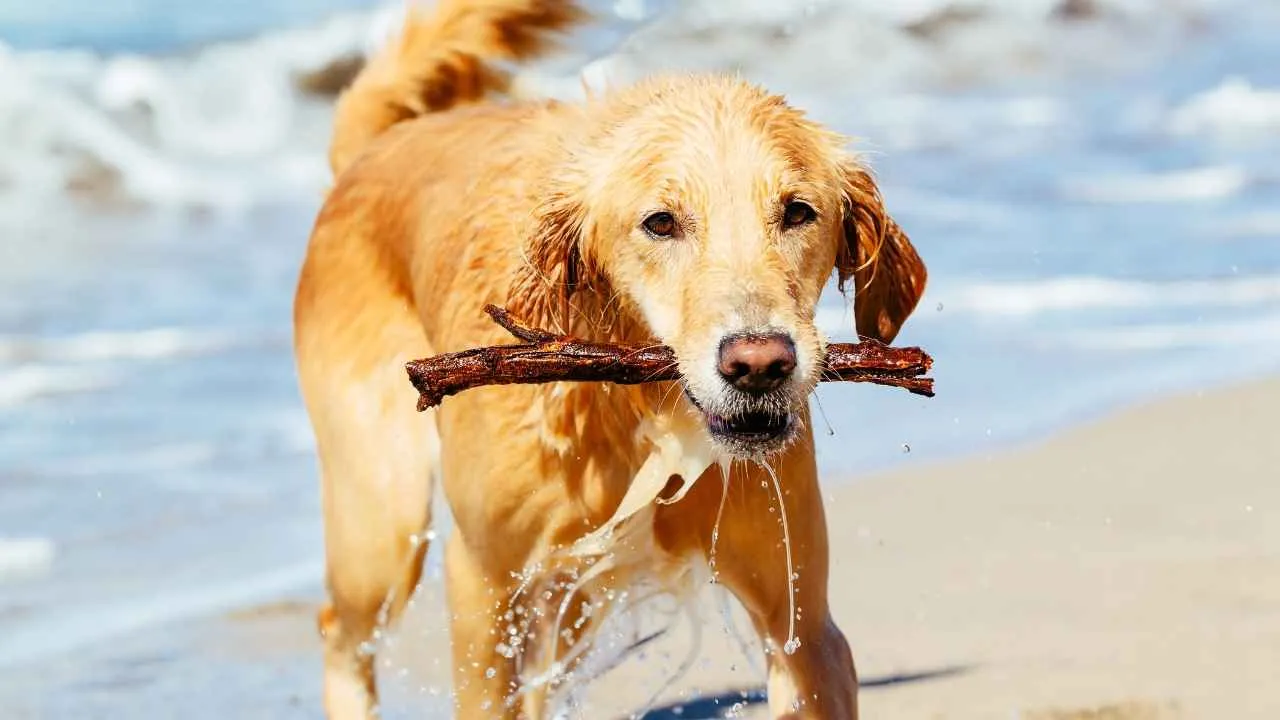
Golden Retrievers are known to sit or lie near their owner’s feet during meals, often placing their head gently on a lap or leg. This is seen more often in homes where dogs are regularly included in relaxed indoor routines. Their calm posture reflects a desire to stay near, not disrupt.
Motivated by Positive Reinforcement
Goldens frequently repeat behaviors that led to positive attention or touch, especially in predictable settings like mealtime. If they were once petted or spoken to while nudging an arm, they may do it again. This habit forms through repetition, not demand.
Consistent Companion Behavior
The breed is naturally drawn to human activity and often shadows its owner throughout the day. Sitting nearby while eating follows the same pattern of always being close. Their quiet presence is part of their deep bond with family members, as stated in Citizen Shipper.
Response to Owner’s Posture
Golden Retrievers are highly observant of body language, especially stillness and calm seated positions. During meals, they may initiate soft contact as a way of engaging without interruption. Their nuzzle is often slow, paired with quiet eye contact or a still stance.
5. Cavalier King Charles Spaniel

This breed is known for following its owner from room to room, staying physically close at nearly all times. During meals, many Cavaliers choose to sit near their person and quietly observe. Their preference for shared spaces makes them more likely to nuzzle or lean in.
Gentle Contact for Engagement
Cavaliers use soft gestures like nudging a hand or resting their chin on a lap to draw attention. These small behaviors are often overlooked but stem from their deep companion instincts. It becomes a quiet interaction that feels comforting to both the dog and the owner.
Reinforced Social Timing
Because they are highly people-focused, they tend to repeat behaviors that have worked before during meals. Even a light pat or small glance during dinner can make them nuzzle again in future situations. These habits form quickly in emotionally connected households.
Known for Emotional Affection
This breed bonds strongly and thrives in calm, affectionate settings where they are part of daily routines. Mealtime becomes another setting where they express closeness in subtle ways. The calm presence of their owner is often enough to trigger soft body contact.
6. Havanese
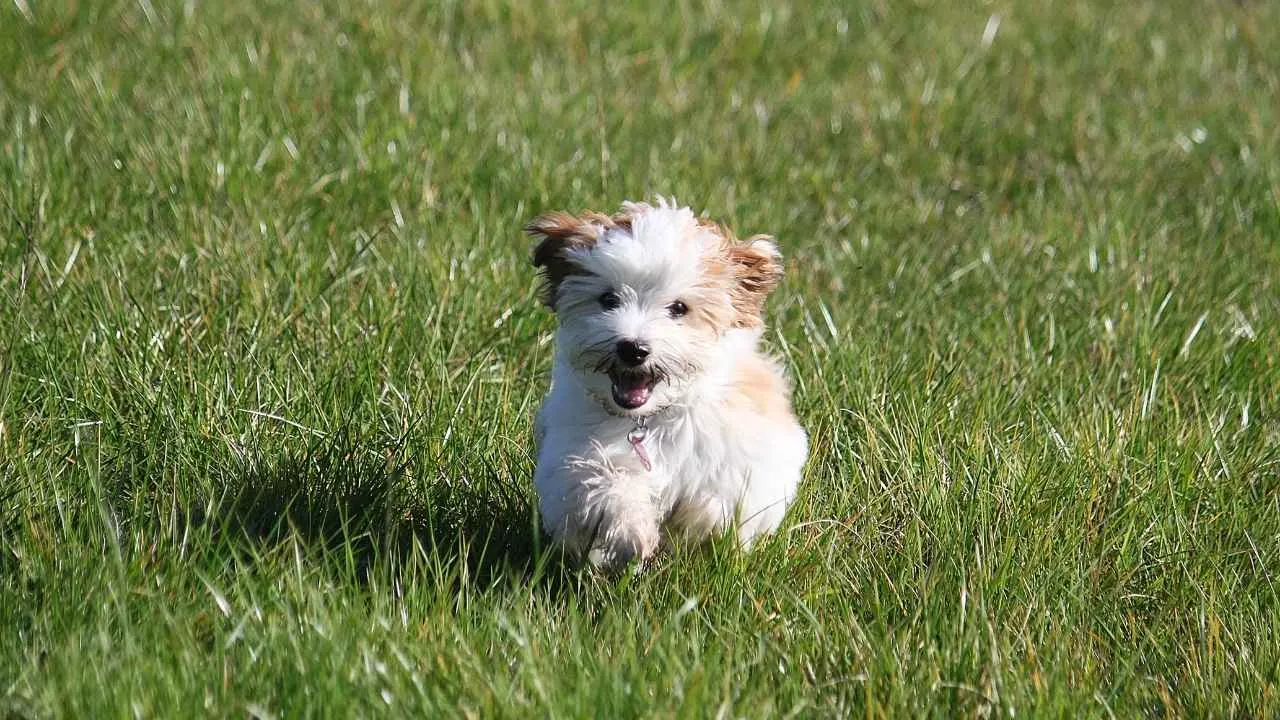
The Havanese often tilt their head or softly paw at a person as part of their communication style. This makes their quiet mealtime nudges feel intentional rather than random. They rely on this kind of interaction to stay included in calm, seated moments.
Nuzzling as a Contact Habit
Rather than vocal outbursts, the breed uses light physical gestures like resting their chin or the side of the head. These small touches are part of how they maintain presence without causing disruption. That includes placing themselves right beside a hand or leg at the table.
Reinforced Through Routine
When given consistent attention during meals, Havanese quickly repeat the behavior with timing and placement. If an owner glanced down or reached to pet them once, they’ll try again in the same way. This links their body-based cues directly to owner interaction.
Attachment Drives Behavior
Havanese form strong preferences for specific people and tend to stay wherever that person is. During meals, this often translates into soft physical closeness that appears as calm dog nuzzle gestures. It’s part of their steady need to stay in physical and emotional sync.
7. Poodle
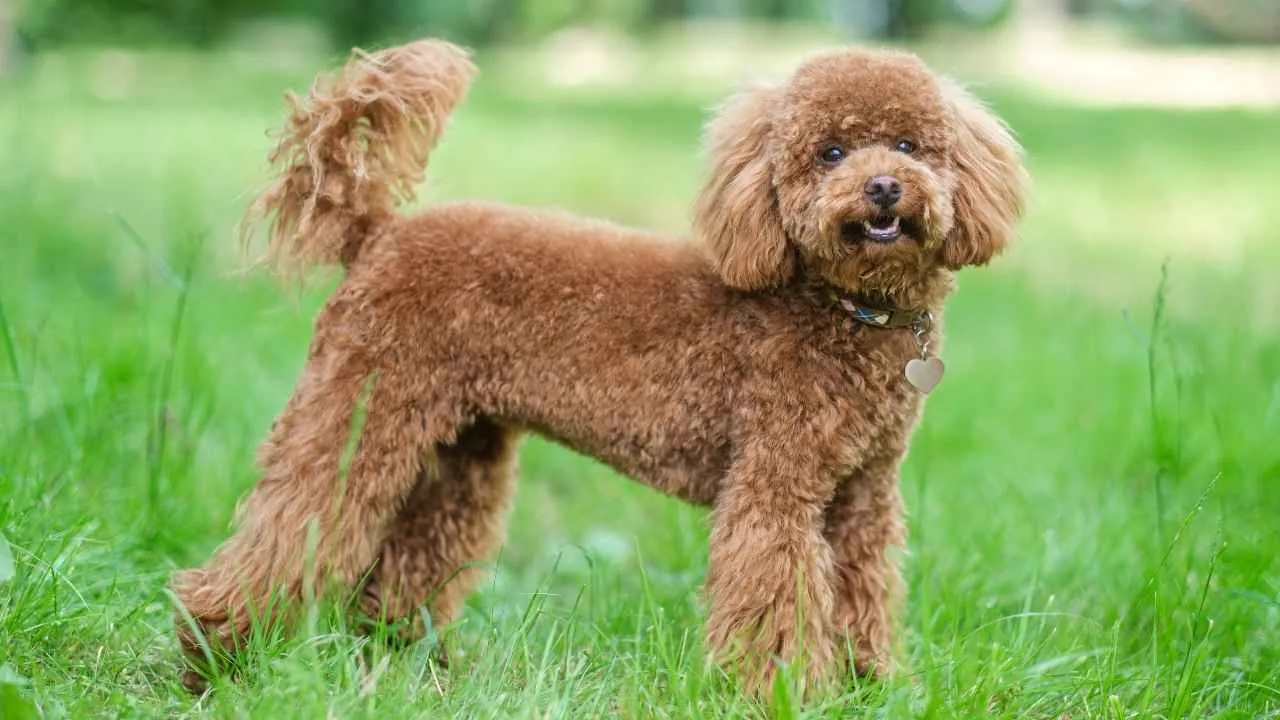
Poodles are quick to recognize patterns, and seated meals often become one of those signals. If a certain chair, plate, or movement is associated with interaction, they notice it. This anticipation often leads to consistent presence during mealtimes.
Expressive Physical Communication
Rather than loud or exaggerated behavior, Poodles use smaller gestures like resting their chin on a leg or nudging an arm. These moments are often quiet and deliberate. The behavior tends to increase when they’re relaxed and feel emotionally secure.
Responsive to Attention
Many Poodles develop habits based on past responses, including moments at the table. If they’ve been spoken to, touched, or allowed near food, they learn to replicate that scene. This includes calmly pressing against the leg or nudging the hand holding utensils.
Preference for Closeness
This breed often favors close personal spaces and tends to follow their person from room to room. During mealtimes, this translates to sitting beside the chair or quietly resting part of their body nearby. It reflects their steady desire to stay close without interrupting.
8. Collie
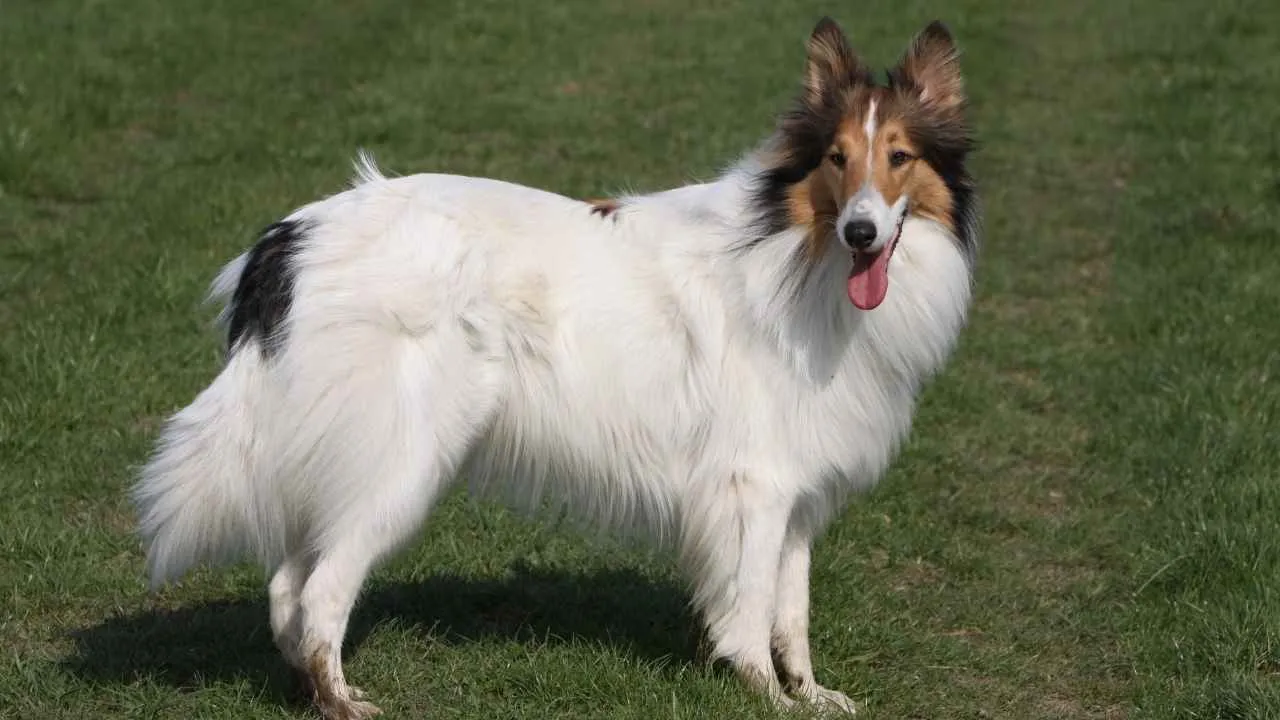
Collies are known for their calm, dependable personalities, which makes them especially drawn to peaceful routines like sitting with you at the table. Their predictability often leads them to quietly settle close during meals. This stillness often includes light physical contact as a quiet reassurance.
Calm Physical Interaction
They rarely beg or paw in demanding ways, but will nudge softly with their nose or shoulder when they want closeness. These soft nudges often happen when their person is still and focused. It’s their quiet way of maintaining presence without breaking the moment.
Attention to Human Cues
Collies are highly tuned in to human movement and stillness, often reacting subtly to body language or voice tone. When seated, the dog may lay their head near a resting hand or press lightly against a leg. Their awareness makes them steady and emotionally synced companions.
Nuzzling Reinforced by Bond
Their habit of staying close during meals isn’t just about food, but about attachment. Collies often use that time to stay physically near without overstimulating the environment. That quiet nuzzling becomes part of their bond-forming behavior over time.
9. Bichon Frise
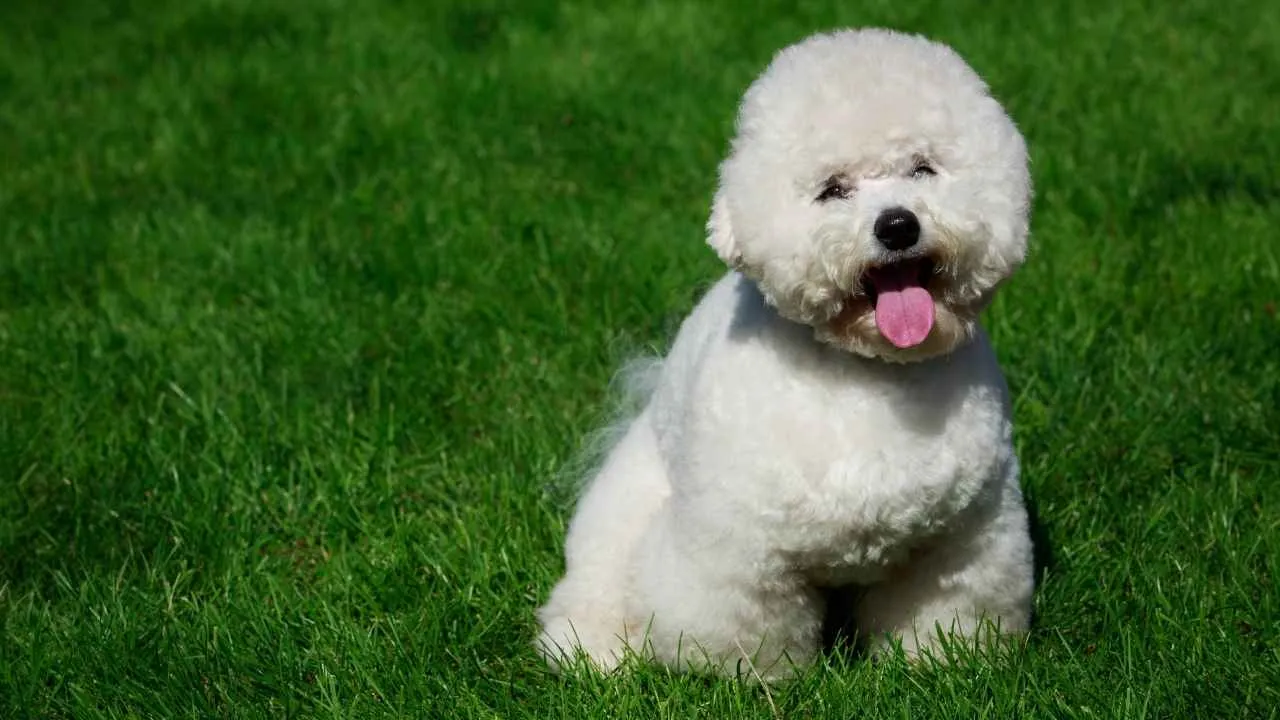
Bichons carry a cheerful and affectionate temperament that keeps them in constant touch with their environment, as per Zealandia Pets. This upbeat nature often leads them to approach during shared, quiet moments like meals. They tend to position themselves close, offering light nudges or soft brushes against a leg or arm.
Uses Softness as a Social Tool
Their small build and plush coat allow them to lean in gently without causing disruption. These dogs often express attention-seeking behaviors through subtle contact instead of vocal signals. Resting their head near your plate or lightly against your arm is one of their ways of staying involved.
Learned Behavior Through Feedback
Routine responses from people during meals shape how they continue this behavior. A glance, smile, or pat quickly turns into an encouraging signal for the dog. Over time, the gentle mealtime nuzzle becomes part of the dog’s pattern of social closeness.
Strong Desire to Participate
They are highly interactive and enjoy being part of every activity happening around them. Meals become another shared event where their presence is felt in quiet, affectionate ways. This includes calmly settling nearby and leaning in without interrupting the flow of the moment.
10. Boxer
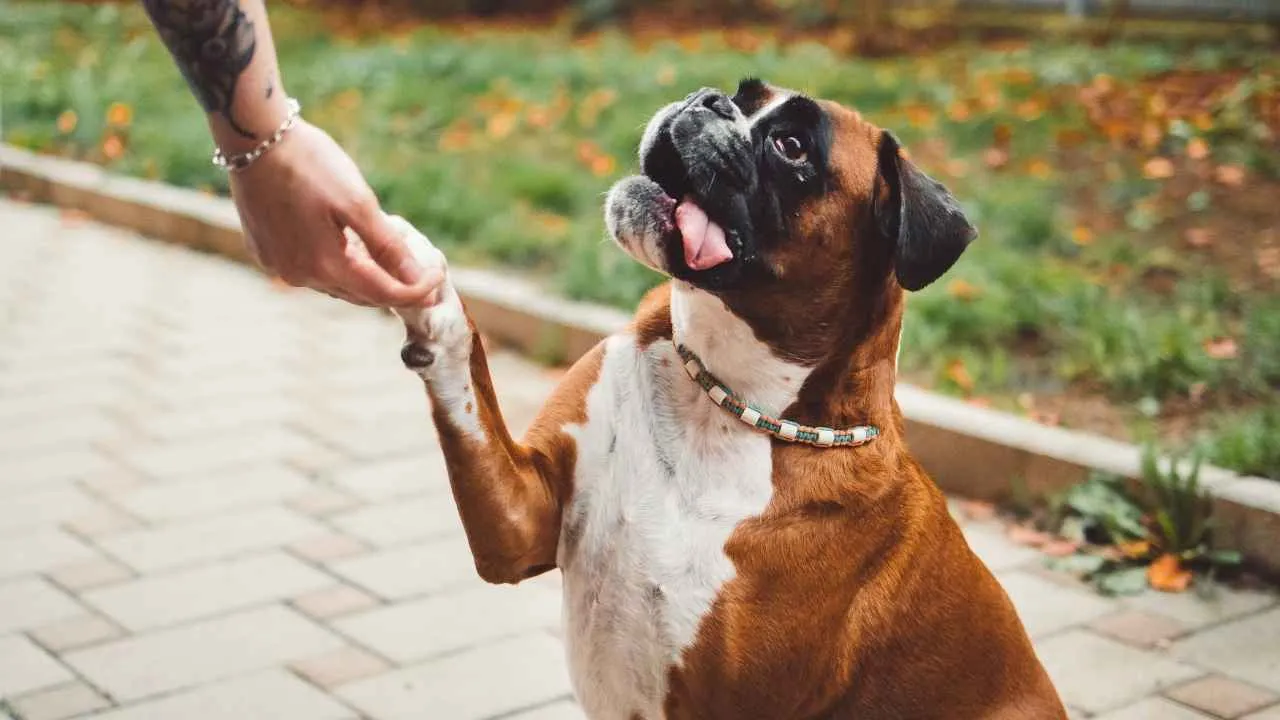
Boxers have a habit of following their people from room to room, always needing to be part of the moment. Their active personality doesn’t quiet down completely indoors, but instead turns into fidgeting or light physical gestures. During meals, that includes casual nudging, resting their face, or pacing nearby.
Physical Ways of Connecting
This breed relies heavily on physical contact to show presence, often placing a paw on the lap, gently bumping a leg, or leaning their chest against a seated person. These actions are rarely random. They’re often timed with quiet, still moments when the dog feels emotionally synced with their owner.
Pattern Recognition
Boxers are smart enough to recognize daily patterns and repeat behaviors that led to affection or inclusion. If a Boxer received a head rub or attention while nudging someone at the table, the moment will likely be repeated. It’s not begging—they’re responding to subtle social reinforcement.
Emotional Readiness
Even with their clownish and high-spirited image, Boxers are emotionally in tune with their close humans. When you’re seated and calm, they tend to offer soft contact like pressing their head near your side. It’s part of how they stay emotionally in the loop without always being loud or demanding.
Conclusion
Mealtime means more than food to certain dogs. It’s a time to settle in close, to find calm in the rhythm of the day. These gentle nudges, soft rests, or quiet lean-ins aren’t about begging. They’re about being present, being seen, and being near. For some breeds, this becomes habit.
For others, it’s instinct. But either way, the message stays the same: “I’m here with you.” The repetition of it becomes a shared language. A small touch at the table, a glance, a moment of connection.
Nothing loud, nothing forced—just part of the daily bond. And once it starts, it often becomes one of the simplest, most enduring parts of living together.


